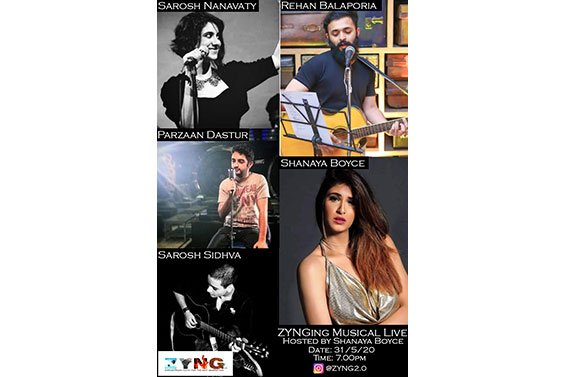Khao, piyo, maja karo: Explore the Parsi mantra with Kunal Vijayakar
There’s a lot more to Irani Parsi food than bun maska and berry pulao. This is a rich cuisine that retains its delicious Levantine roots.
Which community in India celebrates three birthdays for each person and four New Years per annum? It’s the Zoroastrian Irani Parsi community. Every Irani Parsi (and I am going to refer to them as such) celebrates ‘Roj nu Birthday’, which is the Zoroastrian calendar birthday; the Irani calendar birthday; and a regular birthday by the Gregorian calendar.
As if celebrating three birthdays each was not enough, they also celebrate four New Years — Jamshedi Navroz, the Shehenshahi New Year, January 1, and the Kadmi New Year, which has just gone by on July 18.
Kadmi is the Iranian New Year. It’s got something to do with the respective calendars and some wrangling over months or dates. But none of that matters to the Irani Parsis, if it means one more reason to celebrate!
Most Irani Parsis migrated to India in the late 19th and early 20th centuries. They came bearing such time-honoured, euphonious and rhapsodic surnames as Shirazi, Khosravi, Faroodi, Kermani, Dehmiris, Yezdani, Kayani and Jafrabadi. Some of these names you may recognise from Mumbai cafés instituted by members of the community. Cafés named romantically after Iranian traditional surnames, like Yazdani and Kayani, some christened out of obsequiousness to the British like George V, Edward VIII and Britannia, and some made to sound exotic and non-Indian like Cafe De La Paix.
These bakeries and boulangeries that once served French style buns with butter, English mutton sandwiches, samosas, chicken puffs, cream puffs, mawa cakes and tea are now few and far between. Some still stand tall, like Sassanian Bakery and Boulangerie, Kyani & Co (who still makes patties and samosas), Yazdani Bakery who are master bakers, and B Merwan & Co who still bake their world famous mawa cakes.

Today, the most Mumbaiites know of Irani food begins at bun maska-chai and ends with berry pulao. But there is so much more to the cuisine. Irani Parsi food is vastly different from the Parsi food we are familiar with. The cardinal distinction between the two cuisines is that Parsi food, with its spicy Dhansak, Salli Boti and Patra Ni and Saans ni Macchi, blends Persian, Gujarati and British influences, while Irani Parsi food is milder and meatier, with elements such as eggplant, dry fruit, saffron, beans, and lashings of yogurt, that reflect its Mediterranean and Levantine roots.
Iranian food is essentially a repast of bountiful kinds of Kebabs, Kaftehs, Breads, and Oosh or Ash, which are slow-cooked, thick soups. Khoresh-e Fesenjan (the stew of kings) is the national dish.
I often go to Colbeh, an Iranian mom-and-pop joint, whenever I’m in London. On a wet chilly morning in Porchester Place, a hot roti straight out of the tandoor with chelo khoresh fesenjan, a portion of tender melt-in-the-mouth Kabab Koobideh (chargrilled minced lamb kababs) and a bowl of chilled Mast-O-Khair (strained yogurt dip with cucumber and mint) feels like a warmhearted hug.
Unfortunately, none of the Irani cafés in Mumbai does Iranian food; it’s just a lot of Bread and Breakfast. Even the Berry Pulao at Britannia is eventually little more than some version of a Biryani sprinkled with zereshk or sour berries. Café Universal, another Irani-owned eatery, serves two Persian dishes — Ghormeh Sabzi (vegetables, kidney beans and dried Iranian limes with chicken, mutton or veg) and Gheimeh Bademjan (brinjal and mutton kheema in a tomato sauce), and that’s where it ends.

But two women have decided to buck the trend. Perzen Patel (half Irani and half Parsi) and Subhashree Basu (not Irani at all) have been experimenting with Iranian food for a couple of years. At their takeaway enterprise, called Greedy Foods, they have produced Irani festival menus quite successfully. In celebration of Kadmi New Year, they’ve introduced a Persian-influenced menu. Mind you, they are far from traditional, but they do bring together the heart and wisdom of Iranian cooking and the taste and bite of change. If I tell you what they’re cooking this season, you’ll hate me for finishing most of it.
Their menu includes Ash-e Reshteh (also known as Osh-e-Meer, a thick and hearty noodle soup with slow-cooked lentils, greens, mutton and spaghetti); Land & Sea Koofteh (lamb meatballs stuffed with tangy seafood, cashews and raisins); Khoresh-e Anjeer (chicken stew with dried figs) and an Irani Berry Pulao (pulao layered with meat, kebabs and zereshk).
So, I spent the Irani New Year with my Irani friends, Boman Irani and his family, with a song on my lips and a prayer in my heart that they celebrate even more New Years and many more Birthdays, with even more food.




